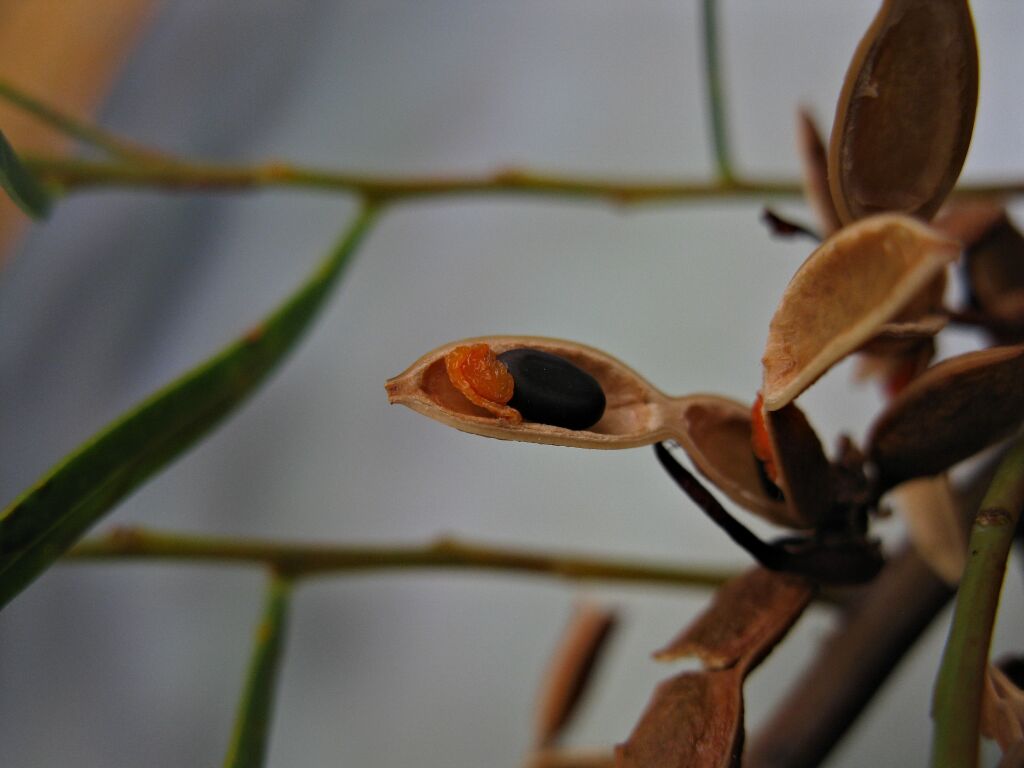Acacia cupularis
DominGlabrous, open to subdense shrub, 1–2.5 m high; branchlets commonly dark red-brown, often lightly pruinose, not ribbed. Phyllodes rather distant, narrowly linear, 3–7 cm long, 1–4 mm wide, moderately thick, finely wrinkled when dry, subglaucous to dark green, apex rounded-obtuse, mucro minute and more or less central; midrib not prominent; glands 2 or 3, lowermost 3–14 mm above pulvinus, distal glands smaller with one at base of mucro. Racemes with rachis 1–7 mm long, 2–3-headed; peduncles 2–6 mm long; heads globular, subdense, 16–22-flowered, golden. Flowers 5-merous; sepals united, more or less truncate. Pods submoniliform, to 7 cm long, 4–5 mm wide, crustaceous, breaking readily at constrictions, more or less erect, commonly dark brown; seeds longitudinal, oblong, 3–5 mm long, dull, light brown, aril orange to scarlet. Flowers mostly Sep.–Oct.
MuM, Wim, VVP, OtP. Also WA, SA. Although mostly coastal or near-coastal throughout its range, it is known in Victoria from only Wyperfeld and Little Desert National Parks and near Dimboola. Grows in sand, sometimes on dunes, or in loam or sandy clay in mallee communities.
Acacia cupularis was until recently considered conspecific with A. ligulata. It differs from that species in having red-brown, smooth branchlets; generally narrower (1–5 mm cf. 3–14 mm wide), thinner (therefore, not as coarsely wrinkled when dry) phyllodes which are never uncinate and have rounded-obtuse apices with a minute, more or less central mucro; and narrower (4–5 mm cf. 5–9 mm wide), crustaceous pods which break readily at constrictions between seeds.
Entwisle, T.J.; Maslin, B.R.; Cowan, R.S.; Court, A.B. (1996). Mimosaceae. In: Walsh, N.G.; Entwisle, T.J., Flora of Victoria Vol. 3, Dicotyledons Winteraceae to Myrtaceae, pp. 585–658. Inkata Press, Melbourne.
 Spinning
Spinning


